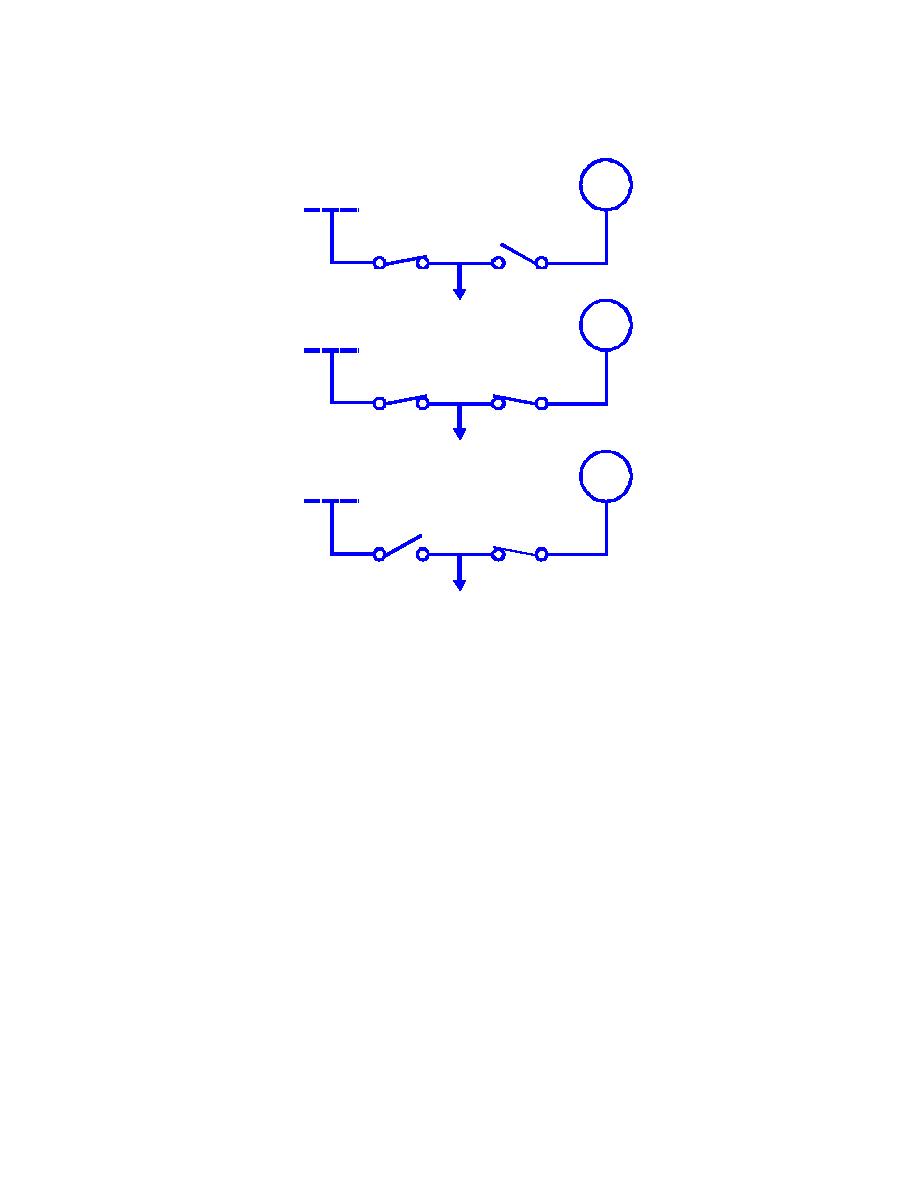
UFC 3 -520-01
June 10, 2002
Figure 13-2. Closed Transition Transfer
Utility
Emergency
Initial
Generator
Conditions
Closed
Normal
Load
Utility
Emergency
Condition
Both
Generator
During
Closed
Transfer
Load
Utility
Emergency
Condition
Generator
After
Transfer
Closed
Emergency
Load
13-5.2.2.2 Closed transition transfer must be used with care on any transfer scheme
that includes commercial power. Because of the problems that can be caused by
inappropriate closed transition transfer, the following subsections provide a dditional
information and design criteria if commercial power is involved.
13-5.2.2.3 Closed transition transfer between commercial power and an emergency
generator means that the two sources are momentarily operating in parallel. In this
case, install a ll controls and protective functions necessary to operate a generator in
parallel with commercial power. Do not use an in-phase monitor to accomplish the
transfer. Instead, include synchronization equipment with the transfer switch to actively
control the speed and phase angle of the generator relative to the utility. The generator
must be properly designed for parallel operation with commercial power, including
provisions for load control and power factor control. Note that even with the above
features, closed transition transfer will still place the full load on an unloaded generator
as an instantaneous load. This block loading of the generator will cause a voltage and
frequency excursion that still might exceed the intended power disturbance limits.
13-5.2.2.4 Utility permission is required for all systems paralleled with the utility system.
Even if the utility grants permission, it will probably impose additional protective relaying
requirements to protect the utility system from transfer switch problems. Some utilities
do not allow closed transition transfer with the emergency system under any conditions.
13-15



 Previous Page
Previous Page
